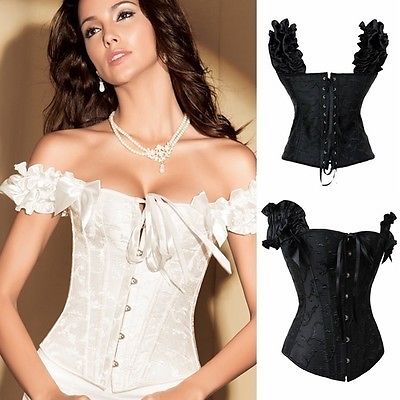The Corset – Many people’s view of Victorian women -clutching to bedposts while their maid pulls and pulls at the corset strings to achieve the desirable and highly restrictive tiny waist. The woman battles against the restriction of her undergarments but to no avail. She is doomed to her position in society: a slave to fashion, cosseted and striving to be pleasing to men, whatever the cost.

Now, corset sales are booming, part of a massive trend for body shaping underwear, but the peaks and troughs of demand tell a story about feminism and body image over the past 200 years.
Beyoncé, Lady Gaga, Madonna, Miley Cyrus – there’s quite a list of performers with a history of taking to the stage in a corset. But sales figures suggest ordinary people are turning to one of the greatest symbols of the Victorian era. Corsets are making a comeback.
I think a corset might be one of the most romantic of all lingerie styles. It’s shape wear that can double as clothing. It can look Goth or steampunk, if that’s more the style you’re into. Corsets are even popular for brides. The rise and fall of the corset which has been around in one form or another for hundreds of years also tells a tale of feminism and changing body image.
In Victorian times, most well-to-do women wore one under their dress. But in the 20th Century, the Victorian corset came to be regarded by many as physically oppressive and even associated with women’s inferior status. At one point, it nearly disappeared.
During WWI, there was a practical assault on the corset. With many women working, a constraining undergarment was unhelpful and in parts of the US, women were told to stop buying corsets as the metal was needed. At the same time, the bra started appearing on the scene.
Fashion trends also saw corsets being cast off. The popularity of Coco Chanel’s 1920s creations saw relaxed fashions and flapper dresses, making the flattened female form, or boyish look, more desirable.
There was a brief return to female curves and waist-nipping corsets in the 1950s, when Christian Dior’s “new look” became fashionable, as women sought a glamorous look after the austerity of WWII. But the 1960s saw women get rid of girdles and garter belts en masse at a time of burgeoning female empowerment. Of course some women, particularly those who went for a gothic or punk look, have claimed corsets as a subversive statement for years.
Man-made fibres had changed the make-up of corsets over the years, making them more comfortable. But it was not until Madonna made headlines with her corset-inspired stage outfit during her Blond Ambition tour in 1990 that most women started being interested in them again. Then came the boom of the burlesque scene in the 2000s which saw the corset reincarnated as a symbol of sexual empowerment. Designers such as Prada and Louis Vuitton have put corsets and the 50s silhouette on a pedestal, but more mundane clothing chains have brought the look to the masses.
For me, I believe that corsets are symbols of feminism. It screams girl power and that’s why it’s my passion to design more of it and influence people with feminine power thru my corset designs.
